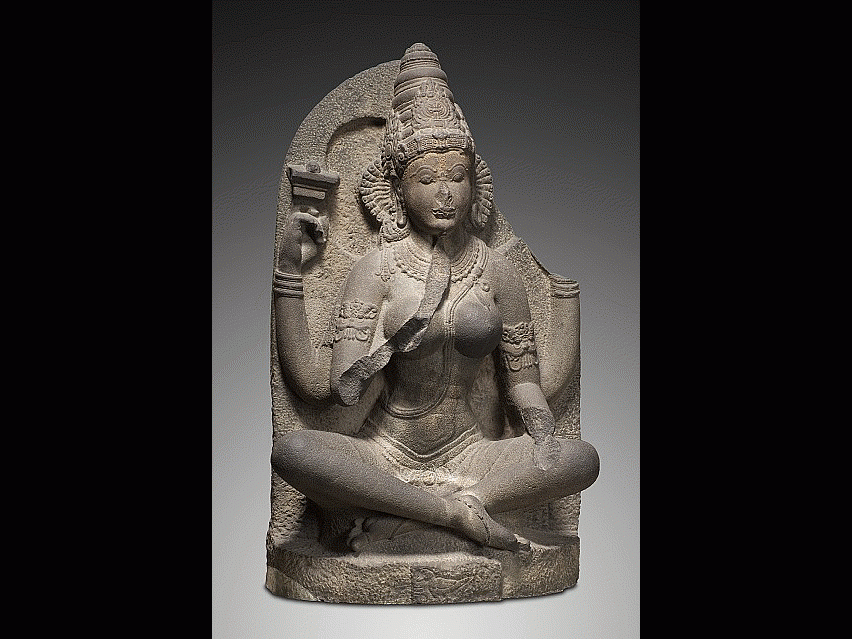November 4–5, Colgate University hosted scholars from around the world for “Reuniting the Tamil Yoginis II: Planning the Exhibition,” a symposium to discuss the future exhibition of 14 yogini goddess sculptures from the 9th and 10th century.
The discussion was led by Padma Kaimal, Batza Professor of art and art history and director of the Division of University Studies at Colgate; Detroit Institute of Arts curator Katherine E. Kasdorf; and Smithsonian National Museum of Asian Art curator Emma Natalya Stein. Symposium speakers delved into the yogini goddess statues’ complicated and deeply interconnected history and underscored the importance of the exhibition plan.
Unlike traditional exhibits, centered on sharing collected works with the rest of the world, the Tamil yogini exhibit would have an additional purpose: to reunite the goddesses with one another after centuries apart.
“When the yoginis are together, a story begins to unfold that is imperceptible when they are apart,” explained Kaimal. “When united, you begin to see them as a crew, as a dynamic gang who are surging quietly on their perches and dancing to the song that Shiva is playing on his veena.”
The 14 tantric goddesses began their lives together more than a millennia ago in a temple in Kaveripakkam, Tamil Nadu, India. Circling the edge of the temple, the goddesses sat, waiting to be worshiped by pilgrims, who came from far and wide to pray for everything from strength to courage to fertility.
For many generations, the goddesses remained together in Kaveripakkam. However, in the 15th century, their original brick and timber temple was destroyed, likely by Indic groups, who feared the statues within the structure. While some of the temple’s statues were lost, many, including the yogini goddess statues, were salvaged and sent to Kanchipuram, where they were once again worshiped in other religious structures. But the goddesses remained in place for only a few centuries before they were whisked off once more, this time to locations around the globe.
Efforts to reunite the statues in the early 20th century were fleeting, the majority of the yoginis making their way into the hands of European and American collectors, where they have remained. Today, only two known yoginis can be found in their Tamil Nadu homeland: one in the Chennai Government Museum and the second in a temple, where it was only recently rediscovered and identified by Stein.
“Once I recognized the goddess statue as a yogini goddess and it began to be cleaned off, it was like watching a polaroid picture developing before my very eyes,” said Stein. “Suddenly, I could see these details that weren’t visible before, and it crystallized in my mind that the face before me was the same yogini face I had stared into so many times before.”
Colgate’s November gathering was the sixth in an ongoing series of symposiums that Kaimal, Kasdorf, and Stein have held to plan the exhibit. Reuniting the Tamil yogini goddess statues will not be an easy task, but after receiving a planning grant from the Lilly Endowment, the trio is tentatively scheduling the event for 2027–2028, with many more opportunities for planning and collaboration in the future.
